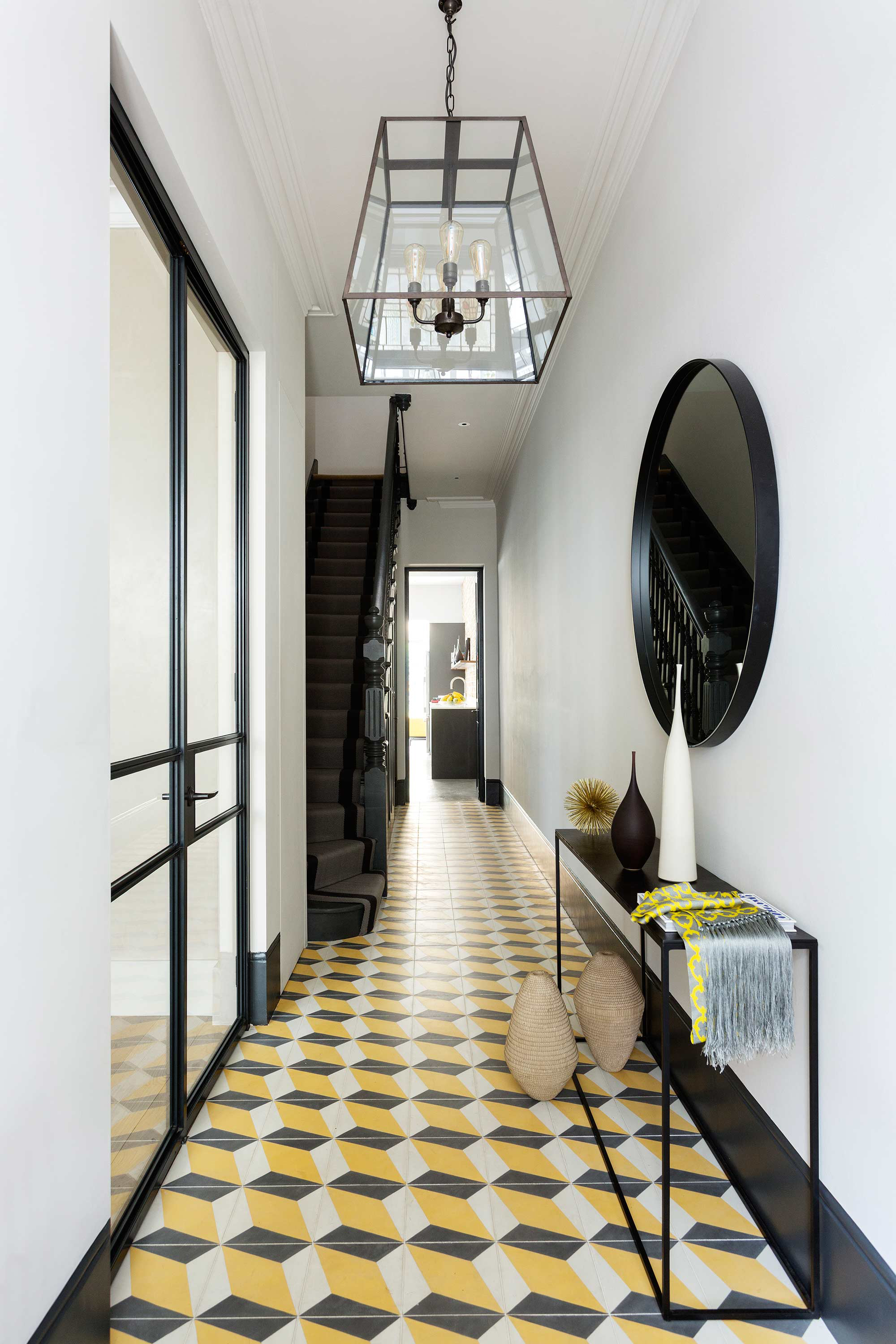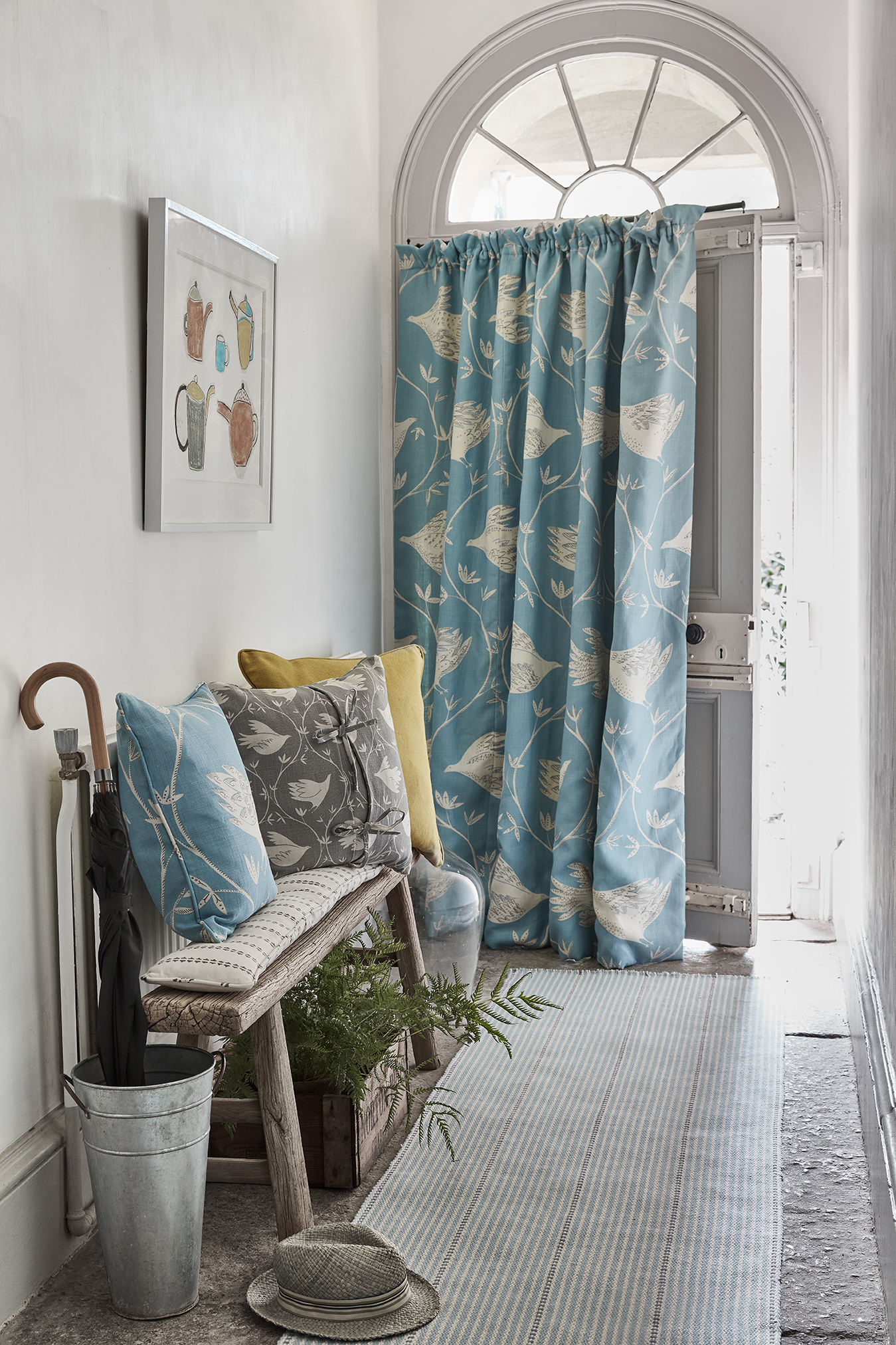6 ways to add color to an entryway that does not involve paint – beautiful tips for instant character and style
Transform a bland entryway into a joyful, uplifting space with these inspiring ways to add color without picking up the paintbrush


Paint is a quick and easy way to add color to an entryway no matter the size, but it's not the only way to make an impression.
Entryways are often narrow and can lack light making them a challenge to decorate. With this in mind, it's no wonder many of us opt for neutral walls to keep them feeling as bright as possible, but this can mean they lack personality. Luckily there are many ways to bring uplifting color additions to the space while keeping the backdrop fresh and uplifting.
Whether you're starting on a home redesign or have inherited a bland entryway crying out for a burst of energy, we've asked experts for their tips on how to add color to an entryway that doesn't involve paint and have rounded up our favorites below to help you get inspired.
How to add color to an entryway that doesn't involve paint
There are so many ways to brighten an entryway with color without picking up a paintbrush, but how do you know what's right for your space? Ultimately it will depend on what look you wish to create and how much of an impact you're seeking to make.
'Decide on how you want it to look and feel; do you want it to be bursting with bright tones or do you want it to just have touches of color?' says Sam Hood, co-founder and chief creative officer at Amara.
'For a lasting impression a colorful tiled entryway floor, fitted carpet, or hallway wallpaper can really make a statement, alternatively, if you've inherited a plain space that is crying out for an instant color pop then a quick and effective way to brighten your space is to dress your walls with artwork, refresh your floor with a vibrant hallway runner or simply display your favorite flowers in a striking vase,' adds Sam.
To help get you inspired, below we've rounded up our top ways to add color to an entryway that doesn't involve paint along with some advice from interior experts.
1. Add a panel of wallpaper

Wallpaper is a great way to bring color and interest into an entryway without using paint. When used floor-to-ceiling colorful wallpaper can sometimes be overwhelming, so to keep the space feeling bright consider papering above paneling as done here by Summer Little, founder of Prescott Interiors.
'The entry doesn't get tons of natural light, but we loved the idea of using wallpaper to add personality and a wow factor. We installed another layer of trim and unified the walls and ceiling with the same shade of warm white. Even with the addition of navy wallpaper, it still feels brighter than it was before. The oversized hallway mirror also helps to reflect light from the dining room and is extra functional by the front door.'
'A bold color or large-scale pattern will work best in smaller doses. And you may consider painting your trim to match. Alternatively, a simple print or an organic texture will work well in larger spaces.'

Based in Roswell, Georgia Summer Little, owner and principal designer at Prescott Design has worked on an array of large residential properties across the US. Passionate about creating carefully curated spaces with enduring appeal, her studio offers a range of interior services, including wonderful ways to use color that doesn't involve paint.
2. Go for colorful flooring

Decorating with white is guaranteed to make an entryway feel fresh and bright but it can leave spaces feeling soulless – fitting a statement floor is a wonderful way to bring personality that will keep the space bright.
'These charcoal and mustard geometric hallway floor tiles are not only hardwearing and easy to clean, essential for an area of high traffic, but they also work in harmony with the monochromatic graphic lines of the floor-to-ceiling Crittal doors, the sculptural glass quad pendant and linear furniture,' says Caroline Milns, head of interior design at Zulufish. 'Fresh white walls finish the space reflecting the light along the full length of the hallway to the kitchen ahead.’
3. Hang a statement artwork

Decorating with art is an easy way to brighten an entrance, plus it's a great way to treat visitors to a taster of our personal style. In this beautiful entryway by Caroline Brackett of Caroline Brackett Studio of Design, a vibrant abstract piece really shines when set against neutral walls. 'It’s all about layers and textures. Carefully and thoughtfully accessorize with things you love and that are meaningful. Use artwork that speaks to you.'
4. Add a colorful rug

If you're cautious of decorating with color then start small, suggests interior designer Penny Morrison. 'If you're nervous start with a rug – perhaps a Moroccan style – they have such beautiful colors, a few richly colored cushions and of course some colorful lampshades,' says Penny. 'Paintings look wonderful and last but not least – flowers – dahlias have become so popular again and a big mixed bunch of these in a striped jug can make a room.'
5. Choose a bold piece of furniture

Introducing a statement piece of entryway furniture is another easy way to add instant color that doesn't involve paint, and sculptural designs like this are a great way to create a fun talking point. Consoles or sideboards make a particularly handy pieces for hallways, offering storage space but also a surface to style a display of flowers or decorative objects.
When decorating entryways interior designer Sarah Vanrenen like to use 'either a large-scale wallpaper and/or a piece of bold furniture' to bring life to the space. 'In this case, we have used both to create a big impact on entering the house.' Multifunctional storage benches also make great entryway storage ideas.
6. Introduce colorful fabrics

Whether introduced through cushions or a cozy door curtain, fabrics will bring instant life to a neutral space while also adding warmth and softness, plus, if you're worried about your entryway feeling echoey, they can also help insulate sound, too.
'Hanging large colorful paintings and placing beautiful cushions on a bench will help make any entryway feel brighter,' explains fabric designer Vanessa Arbuthnot. 'Image-based fabrics such as my In Full Flight will add warmth and a relaxing feel.'
How do you add color to a neutral room?
The great thing about having a neutral room is that it gives a versatile blank canvas for decorating with colorful furniture, fabrics, accessories and artwork.
'When it comes to picking furniture and accessories, you should always pick pieces that you love and that is a true reflection of your own personality. With a neutral blank canvas, there really are no rules in terms of how much color and pattern you add,' explains Emma Deterding, founder of Kelling Designs.
'If you want a more cohesive look, then use two or three complementary colors and continue these across the space. However, for those who are more daring, then I'd say release your inner maximalist and let colors and patterns complement and contrast each other to make your own design statement,' adds the interior designer.
Sign up to the Homes & Gardens newsletter
Design expertise in your inbox – from inspiring decorating ideas and beautiful celebrity homes to practical gardening advice and shopping round-ups.

Pippa is a contributor to Homes & Gardens. A graduate of Art History and formerly Style Editor at Period Living, she is passionate about architecture, creating decorating content, interior styling and writing about craft and historic homes. She enjoys searching out beautiful images and the latest trends to share with the Homes & Gardens audience. A keen gardener, when she’s not writing, you’ll find her growing flowers on her yard for styling projects.
-
 Kylie Jenner, Tommy Hilfiger, and Lenny Kravitz transform their homes with prints – the London Original Print Fair Director has a method that makes their look 'accessible and affordable' in your home
Kylie Jenner, Tommy Hilfiger, and Lenny Kravitz transform their homes with prints – the London Original Print Fair Director has a method that makes their look 'accessible and affordable' in your homeCelebrities from the Kardashians to Lenny Kravitz decorate their homes with prints by famous artists, and it's easier to recreate than you might expect
By Sophie Edwards
-
 ‘Completion days’ are the answer to laundry doom piles, pro organizer claims – here’s how this hack can instantly stop fresh laundry from piling up once and for all
‘Completion days’ are the answer to laundry doom piles, pro organizer claims – here’s how this hack can instantly stop fresh laundry from piling up once and for allStay on top of your laundry with the 'Completion days' method
By Chiana Dickson